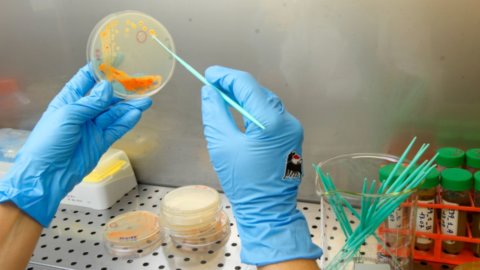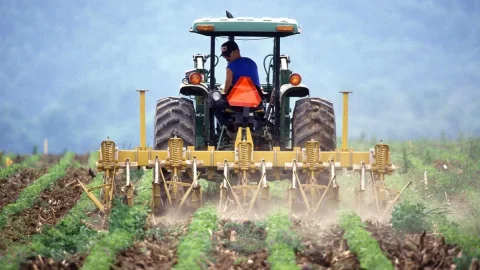In our country, industrial activities conducted in a reckless manner have produced heavy environmental pollution. The surrounding land remained contaminated by highly toxic heavy metals (arsenic, mercury, nickel and copper) or by organic compounds (aliphatic and aromatic hydrocarbons) and chlorinated (carbon tetrachloride, trichlorethylene) residues from the various processes. These substances remain in the soil to this day and continue to poison the plants and animals they come into contact with. Remediation using traditional methods involves the removal of contaminated soil from the site and a series of chemical, physical, thermal or biological treatments that extract the pollutants and degrade them into less dangerous compounds. To the pollution already present must be added that caused by reclamation technologies but also that produced by removal with bulldozers and transport by truck or other means up to the reclamation plant. The dust raised during operations helps to disperse the polluting substances together with the harmful fine particles. Eni is developing remediation processes with low environmental impact capable of eliminating the pollutants present in the soil or in any case reducing them to levels that are no longer dangerous to health.
The research is conducted in the Environmental Technologies unit of the Research Center for Renewable Energy and the Environment in collaboration with the Institute for the Study of Ecosystems of the CNR of Pisa on behalf of Syndial, the Eni group company that deals with environmental. Among the in situ remediation technologies available today, phytoremediation exploits the natural purifying capacity of plants to extract both heavy metals and organic compounds from the soil. The process improves the chemical-physical characteristics of the soil to obtain a real environmental and landscape redevelopment. There are two main mechanisms: on the one hand, plants extract heavy metals from the soil and accumulate them in the roots and leaves (phytoextraction); on the other hand, by exploiting the synergy between plants and microorganisms present around and inside their roots (rhizospheric microorganisms), the biodegradation (phytorizodegradation) of organic contaminants into other simpler and less toxic substances which enter the food chain is promoted of organisms present in the soil. When the action of plants is supported by particular growth promoting bacteria (Plant Growth Promoting Rhyzobacteria) we speak of assisted phytoremediation (enhanced phytoremediation).
The biologists and biochemists of the Research Center for Renewable Energy and the Environment are identifying the optimal conditions for applying the assisted phytoremediation to areas contaminated by heavy metals and hydrocarbons with laboratory tests and trials in the greenhouse and in the field. The ideal plant species for the different types of contaminants were characterized and the microorganism/plant associations with the highest yield were defined. Once the effectiveness of the technology has been demonstrated, intervention protocols are being defined in the field shared by Eni and the public authorities responsible for protecting the environment and health.
The great biodiversity of the plant kingdom and the numerous species capable of developing even on contaminated soil and of accumulating heavy metals in their tissues make phytoextraction a valid alternative to physical and thermal treatments. Particularly promising species have been identified, belonging to the genera Helianthus annuus (sunflower), Brassica (herbaceous plants including very different species, such as mustard, turnip and cabbage), Salix (willow), Populus (poplar) , Lupinus albus (white lupine), Pteris vittata (long-leaved pterid), Zea mays (maize). All the selected species have already proved capable of extracting and accumulating significant quantities of the various metals in the roots and leaves, with efficiencies ranging from 35% to 40% depending on the metal considered. It is possible to hypothesize that in the field, after 4-5 successive seasonal cycles (variable according to the plant used) 100% phytoextraction of the bioavailable metallic fraction can be achieved.
The tests also highlighted the role of rhizospheric microorganisms. The extraction process was supported and assisted by the action of metal-tolerant bacterial strains, i.e. that can survive the presence of those particular metals. Where to find them? But they have been isolated in some of the same contaminated soils: by their very presence they demonstrated their adaptability to the polluted environment. They were then characterized and multiplied in vitro. The microorganisms have been shown to possess plant growth promoting properties: added to the soil sown with the various plants, they have made it possible to significantly improve the performance of the plants, both in terms of the amount of biomass produced and in the yield of phytoextraction. This is increased by 40-50% compared to tests without added microorganisms, reaching efficiencies of up to 60% of the bioavailable metal fraction in one season. This result can make it possible to achieve the remediation objectives much faster. The final result is an efficient, sustainable and cost-effective environmental recovery compared to conventional chemical-physical techniques. But there's more: the soil reclamation process can be associated with the valorisation of the biomass produced for energy purposes by periodically burning the plants in a controlled way to produce thermal energy. And that's not all: if the soil is polluted by heavy metals, these, once concentrated by the plants, can be recovered from the ashes of the plants themselves, allowing them to be reused (phytomining).
Eni's technology therefore makes it possible to avoid polluting reclamation works in themselves, redevelop contaminated sites, produce energy from renewable sources, recover metals. Finally, with the creation of new green areas of a permanent nature, the landscape is improved and the amount of carbon dioxide released into the atmosphere is reduced. You can't get more organic than this!
From the Eniday site.





